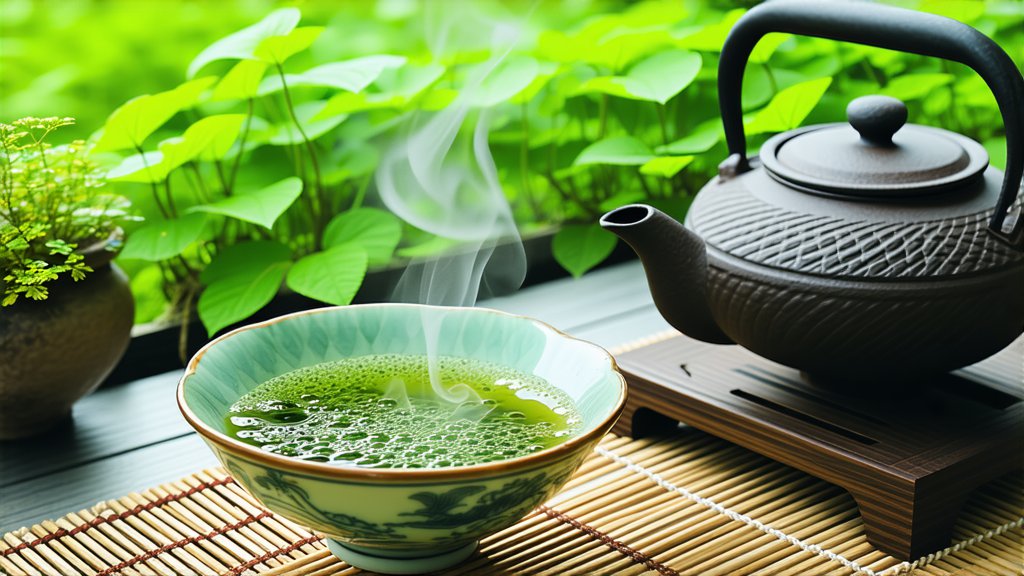
Dragon Well (Longjing) green tea, renowned for its vibrant emerald hue and delicate flavor profile, stands as one of China's most celebrated teas, captivating tea enthusiasts worldwide. Originating from the picturesque village of Longjing in Hangzhou, Zhejiang Province, this exquisite tea has a history steeped in tradition and lore.
Historical Significance
The origins of Dragon Well tea can be traced back over 1,200 years to the Tang Dynasty, though it gained prominence during the Qing Dynasty when it was designated as an imperial tribute tea. Legend has it that the tea earned its name after a visit by Emperor Kangxi, who was so impressed by its quality that he compared the tea leaves to dragon scales dancing in the water. Over centuries, Dragon Well has evolved into a symbol of Chinese tea culture and craftsmanship.
Varieties and Characteristics
Dragon Well tea primarily comes in two main varieties: Xihu Longjing and Meijiawu Longjing. Xihu Longjing is grown in the West Lake region of Hangzhou, while Meijiawu Longjing hails from the Meijiawu Village, which is also located within the West Lake scenic area. Both varieties share similar characteristics but are distinguished by subtle differences in taste and appearance due to variations in soil, climate, and cultivation practices.
The leaves of Dragon Well tea are flat and smooth, resembling the shape of a spearhead. They possess a bright green color and a slightly glossy finish. When brewed, the tea produces a light yellow-green liquor with a fragrant aroma that is both sweet and vegetal, often described as having notes of chestnut or melon. The flavor is clean, refreshing, and slightly sweet, with a lingering umami finish.
Cultivation and Harvesting
The cultivation of Dragon Well tea is a meticulous process that begins with the careful selection of tea bushes. Only the youngest and tenderest leaves are harvested, typically in early spring, when the first flush of growth occurs. This period is known as "Qing Ming," or the Tomb-Sweeping Festival, and it marks the time when the tea plants produce their highest quality leaves.
Harvesting is done by hand to ensure that only the finest leaves are picked. The skilled tea pickers carefully select the top two leaves and a bud from each shoot, avoiding any damaged or older leaves. This selective harvesting ensures that the tea maintains its purity and high quality.
Processing Techniques
The processing of Dragon Well tea involves several key steps that contribute to its unique flavor and appearance:
-
Withering: After harvesting, the tea leaves are spread out on bamboo mats and left to wither under the sun. This process helps to reduce the moisture content of the leaves and initiates the enzymatic reactions that will develop the tea's flavor.
-
Fixation: Once the leaves have wilted sufficiently, they are transferred to large woks and heated at high temperatures to halt oxidation. This step, known as fixation or pan-firing, is crucial for preserving the green color and fresh flavor of the tea.
-
Shaping: The fixed leaves are then shaped by hand or using specialized equipment to achieve the characteristic flat and smooth appearance of Dragon Well tea. This shaping process not only enhances the aesthetic appeal of the tea but also helps to release the flavors trapped within the leaves.
-
Drying: Finally, the shaped leaves are dried to remove any remaining moisture and stabilize the tea for storage. This drying process is usually done in a controlled environment to ensure that the tea retains its optimal flavor and aroma.
Brewing and Tasting
To fully appreciate the nuances of Dragon Well tea, proper brewing techniques are essential. Here are some guidelines for brewing and tasting this exquisite tea:
-
Preparation: Use fresh, cold water and bring it to a boil. Allow the water to cool slightly to around 80-85°C (175-185°F) before brewing. This temperature range is ideal for extracting the delicate flavors without scorching the leaves.
-
Tea Leaves: For a standard 250ml (8oz) teapot, use approximately 3-4 grams of tea leaves. You can adjust the amount based on your personal preference for a stronger or milder brew.
-
Infusion: Place the tea leaves in the teapot and pour the hot water over them. Let the leaves steep for about 2-3 minutes. Avoid oversteeping, as this can result in a bitter taste.
-
Serving: After the steeping time, strain the tea into a fairness cup to evenly distribute the flavors. From there, you can pour the tea into individual cups for serving. Enjoy the tea while it is still hot to fully appreciate its aroma and taste.
When tasting Dragon Well tea, pay attention to its color, aroma, flavor, and mouthfeel. A well-brewed cup should have a bright, clear yellow-green color, a fresh and inviting aroma, a smooth and slightly sweet flavor, and a clean, crisp finish. Each sip should reveal new layers of complexity, making Dragon Well tea a truly rewarding experience for the senses.
Cultural Significance and Modern Day
Dragon Well tea holds a special place in Chinese culture and continues to be celebrated both within China and internationally. It is often served during important ceremonies, festivals, and gatherings as a gesture of hospitality and respect. In recent years, Dragon Well has gained popularity among tea connoisseurs worldwide, who appreciate its unique qualities and rich cultural heritage.
In conclusion, Dragon Well (Longjing) green tea represents the pinnacle of Chinese tea artistry. Its storied history, meticulous cultivation, harvesting, and expert processing all contribute to its exceptional quality. Whether enjoyed for its delicate flavor, aromatic bouquet, or cultural significance, Dragon Well tea offers a window into the timeless traditions and enduring legacy of Chinese tea culture.